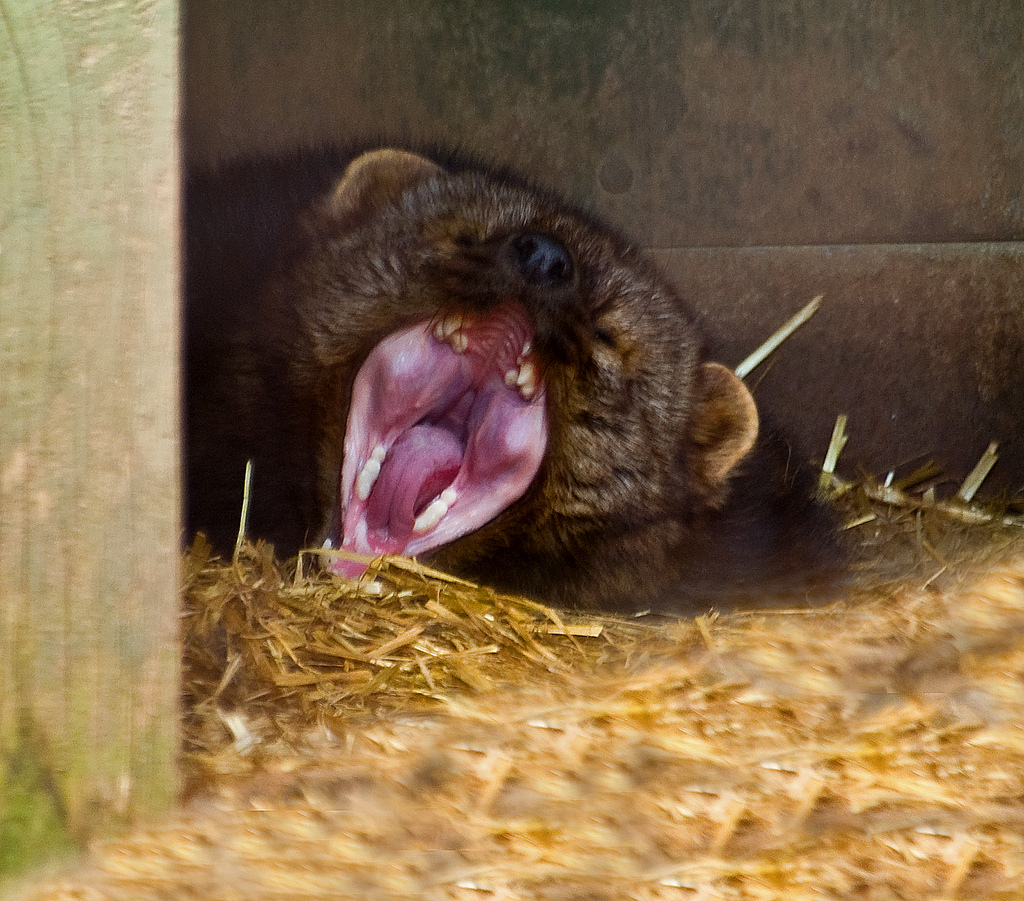Mourad Gabriel is not feeling very mellow, dudes. The Northern California wildlife disease ecologist has been tracking and studying forest-dwelling fishers for the last 10 years, but lately he’s become more of a wildlife coroner.
First, let’s get this out of the way: Fishers deserve your sympathy, but they are not very cute.
A part of the weasel family, cat-sized fishers have hunted turkeys and bobcats, and have few predators besides humans, who used to poach them for fur and now just kill them with pesticides on illegal marijuana farms. From On Earth:
Fishers once roamed our northwestern forests in abundance, but their numbers have dwindled dramatically in the region. Now Gabriel, 38, believes he has unlocked the mystery as to what’s keeping this species from bouncing back. And his discovery, alas, is what has outlaw pot growers reaching for their guns …
“I’m not focused on the pot plants,” Gabriel says. “What makes my blood boil is the environmental damage being done on public land.”
Hit hard by fur trapping and the logging of the forests they favor, fishers had all but vanished from their historic range by the early twentieth century. Gabriel describes them as an “umbrella species,” meaning that they tend to be good indicators of their ecosystem’s overall health. By studying the remaining fishers closely, biologists can get a sense of how other members of their ecosystem are faring.
Fishers live and hunt in mature forests that provide great cover for surreptitious weed grows — grows that are actively poisoning the land and its creatures, adorable and ruthless alike. Gabriel surveyed the scene at one Humboldt County marijuana farm, post-raid.
Pesticide containers were scattered across the landscape, their poison baits marked with countless scratches made by the gnawing teeth of mice and rats. The pot growers, it soon became clear, were spreading large amounts of rodenticide around their plants to protect them from tiny pests. The rodents were living for several days after eating the poison — just long enough to be preyed on by fishers.
Gabriel began to document the stunning quantities of rodenticide that were peppering the 144 square miles of the Hoopa reservation. On one grow site near the reservation, 90 pounds were discovered. He calculates that 10.5 pounds (the amount he found at one of the first sites he studied) is enough to kill 12,542 deer mice or 1,792 wood rats — and anywhere from 5 to 28 fishers.
Outdoor cannabis farming may be more sustainable than the inside kind, but it’s all bad news for the environment. Maybe Humboldt State University’s new marijuana institute could research not just the plant itself, but its effects on the area’s own ecosystem.



